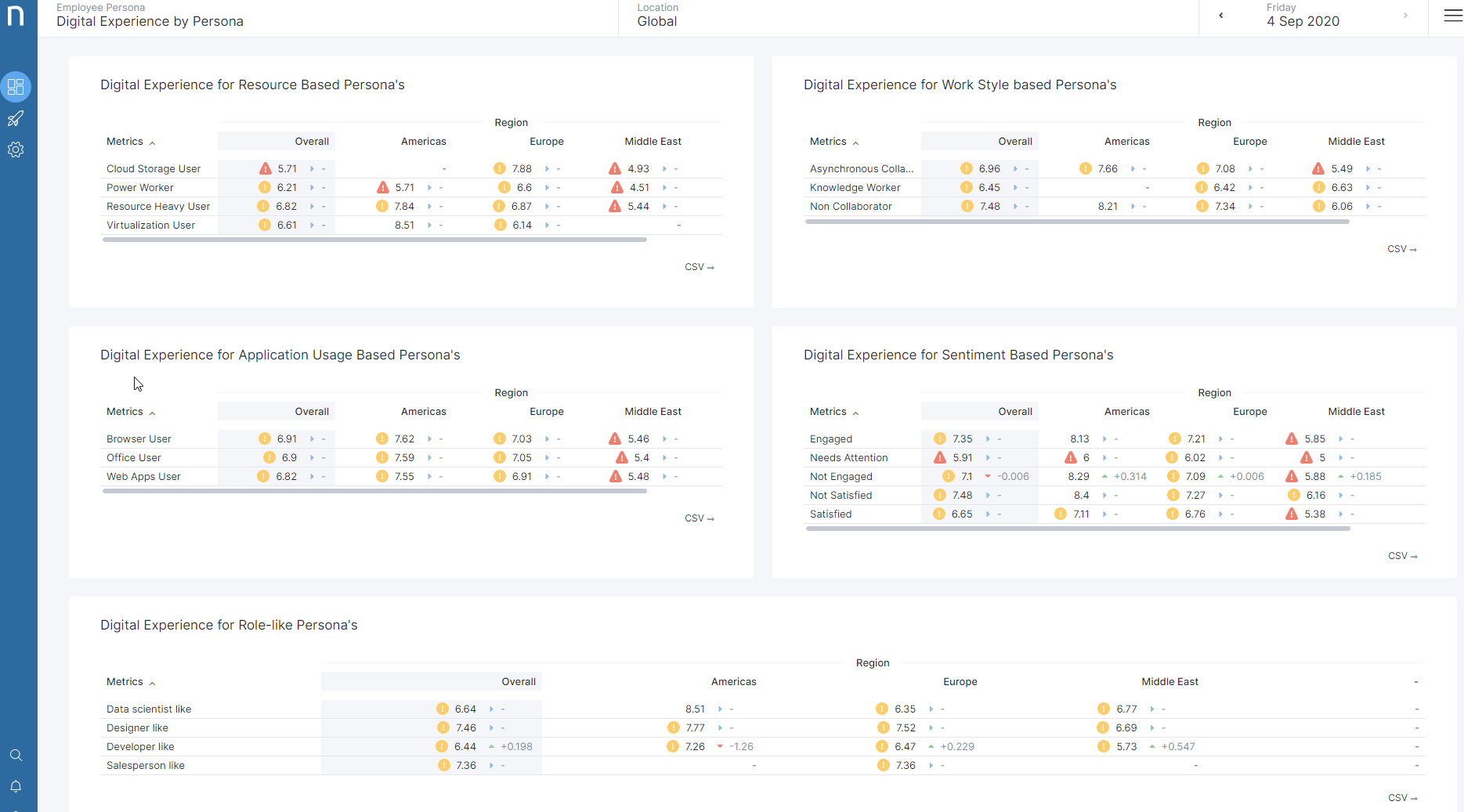Personas Are Not Just For Marketing
“The business does not exist for IT. IT exists for the business”,
said David Paul, Director of IT at TRC, a Nexthink customer, during the recently wrapped up Experience Everywhere virtual conference.
David seems to be stating the obvious. Indeed, this is something CIOs and IT leaders have always understood. But the lower into the IT rank and file you go, this sense of existential purpose often becomes forgotten in the daily hustle and bustle. What takes over instead is often technology for the sake of technology, or IT for the sake of IT.
As a result, projects that are meant to improve the business can sometimes burden the business and its end-users. While other functions often get the attention as the business revenue rises and falls, all IT ever seems to get is whines and complaints.
But how well does IT understand the actual people, the end-users, within those business functions?
After all, those people are the customers that IT is meant to serve. The answer most likely is: Not very well. These end users can often feel like an amorphous black box, who’s most visible only when they are demanding things from IT.
As many in customer-facing roles know, if you don’t understand your customer base well, you cannot be expected to serve them well.
To be sure, IT is hardly to blame for this. The end user base in many modern enterprises is vast and complex. We are talking about tens of thousands of employees, spanning different geography, time zones, and sometimes national borders.
But IT is not the only function confronted with a large and complex “customer base”. Marketing and other Customer Success functions have long confronted similar issues of trying to understand and serve vast and complex customer bases.
What can IT learn from them?
Well, one concept long deployed by marketing and customer success teams is personas and segmentation. Essentially they try to group target customers together based on certain dimensions. Each of these groups is considered a segment or a persona group. That segmentation can be high level or very granular.
There are essentially two purposes for doing this. The first goal is to simplify the complex, to make it easier to understand the target customer. The second goal is to make it easier to serve these customers, because the you can potentially offer something unique to each persona. Both of these goals are highly relevant to IT.
Marketers have long understood that you don’t segment for the sake of segmentation. Rather you segment to the extent that it helps you understand the customer, or that you have truly unique offering for one persona vs another. As a result, what dimensions one chooses to segment these customers can be very important.
Coming back to the IT world, to understand its customers, IT has traditionally relied on relatively simplistic data such as departments and HR job titles. Those do not offer up much information to usefully slice and dice the end-user base. You already know not everyone in engineering is an engineer, and not everyone in sales is selling. That kind of rough grouping simply doesn’t have enough granularity, nor does it carry enough truth, in representing the true needs of individual end-users.
For those IT departments who use Nexthink, however, things are very different.
Natively, Nexthink collects more than 700+ device and usage data points. That is a rich set of information that can finally allow IT to start to *meaningfully* segment and understand its end-user customers.
While understanding the end-user is the starting point, it is by no means the end. Just as in the world of marketing and customer service, what IT can now do, is to perform segmentation in order to provide superior and differentiated digital experience to its customers, while maintaining and even saving cost. For example, for device refresh projects, IT can segment along the lines of computing intensity and mobility. For VDI migration, IT can segment along the lines of computing resource consumption. For smarter onboarding, IT can segment along more granular roles such as front-end vs back-end developers, etc., etc.
This is exactly what Nexthink’s new Persona Insight tool is empowering IT to do.
Right out of the box, Persona Insight has 60+ predefined traits or dimensions and three dashboards that you can use to explore and understand your end-user base. What’s more, those dimensions can be easily modified and recombined so you can perform custom segmentation for the specific initiative you are working on.
If you already have Nexthink installed, head on over to our library page to download the Persona Insight pack. If you are new to Nexthink or simply want to learn more, check out this on-demand webinar for a guided tour.
Want to learn more?
Related posts:
- Personalized IT: What Every Tech Dept. Needs To Know
- IT Innovations in Personalization and End User Personas – Q&A with Prabhu Kaliaperumal
- Workplace DNA. Decoded!
